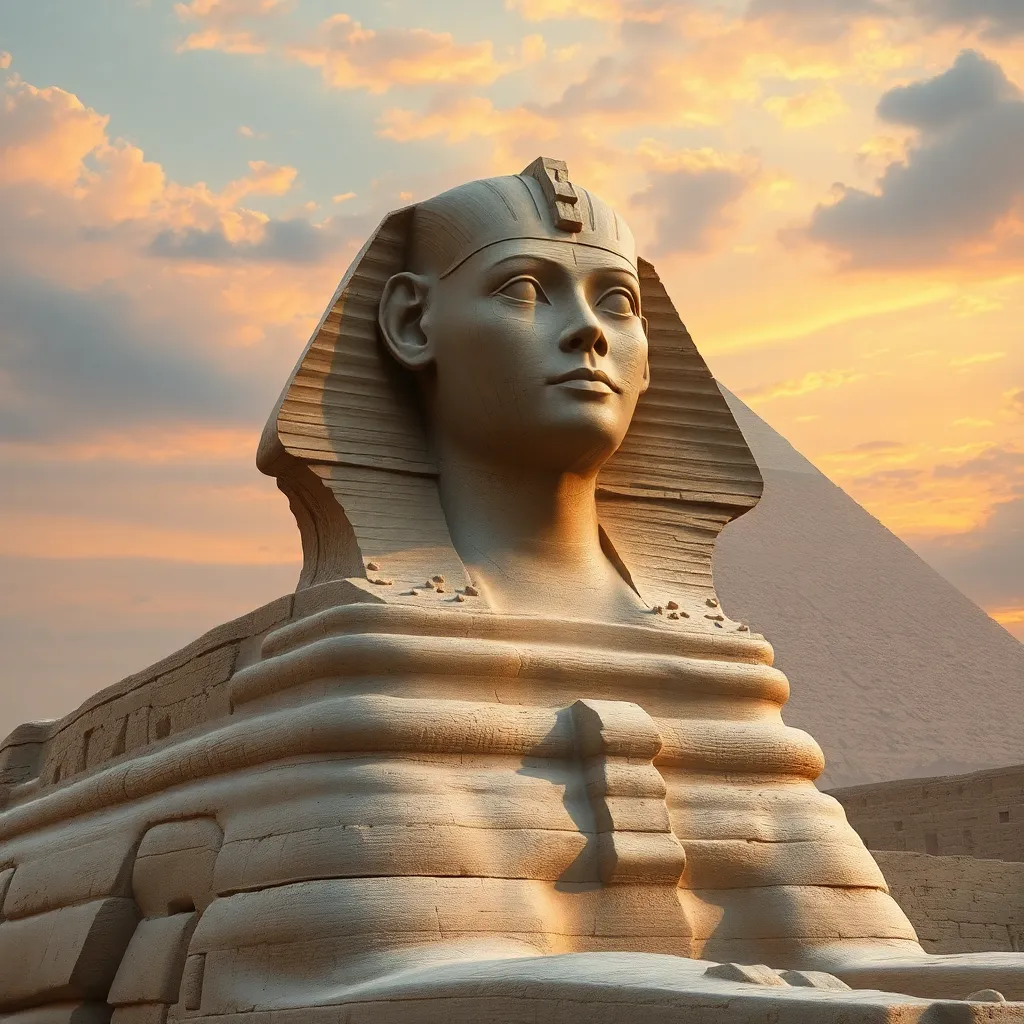The Sphinx and the Mysteries of the Human Experience
I. Introduction
The Great Sphinx of Giza stands as one of the most iconic monuments of ancient Egypt, embodying both historical significance and a profound sense of mystery. This colossal statue, with the body of a lion and the head of a human, has intrigued scholars, travelers, and curious minds for millennia. It serves not only as a remarkable feat of engineering but also as a symbol of the enigma that lies within the human experience.
The Sphinx encapsulates the essence of human curiosity—a desire to understand the unknown and to unravel the mysteries of existence. This article aims to explore the connections between the Sphinx and the human experience, delving into its historical context, symbolism, and the lessons it imparts about our quest for knowledge and understanding.
II. The Historical Context of the Sphinx
The origins of the Great Sphinx can be traced back to the reign of the Pharaoh Khafre, around 2500 BCE. Carved from a single limestone plateau, the Sphinx measures an impressive 73 meters long and 20 meters high, making it one of the largest statues in the world.
In ancient Egyptian mythology, the Sphinx was revered as a guardian, often associated with the sun god Ra. Its presence near the Pyramids of Giza emphasized its role as a protector of the tombs and the knowledge contained within them. As a symbol of strength and wisdom, the Sphinx represented the connection between the divine and the mortal realms.
Furthermore, the Sphinx’s enigmatic nature contributed to its status as a guardian of knowledge and mystery. It has been depicted in various ancient texts and inscriptions, often linked to riddles and the quest for truth.
III. The Symbolism of the Sphinx
The duality of the Sphinx—combining human and animal features—serves as a powerful metaphor. The human head signifies intellect and reason, while the lion’s body represents strength and instinct. This fusion highlights the complexity of the human experience, where rational thought must coexist with primal instincts.
Throughout history, artists and writers have drawn inspiration from the Sphinx, interpreting its image in various ways:
- In literature, the Sphinx often symbolizes the challenge of confronting the unknown.
- In art, it represents a blend of beauty and mystery, capturing the imagination of countless generations.
As a metaphor for the unknown, the Sphinx invites individuals to reflect on the mysteries of life and the inherent uncertainties that accompany human existence. It encourages a deeper contemplation of the questions that define our journey.
IV. The Mysteries Surrounding the Sphinx
Despite its grandeur, many questions about the Sphinx remain unanswered. Scholars have long debated the purpose of its construction and the techniques used to create such a monumental structure. Some of the lingering mysteries include:
- What was the precise purpose of the Sphinx in ancient Egyptian society?
- How was the Sphinx constructed with the technology available at the time?
- What do the wear patterns on the statue indicate about its history?
Numerous theories and legends have emerged in an attempt to explain these mysteries. Some suggest that the Sphinx was a solar symbol, while others believe it might have been an astrological marker. Archaeological discoveries, including hidden chambers and artifacts, continue to fuel research and speculation about its past.
V. The Sphinx and the Nature of Human Curiosity
The Sphinx serves as a catalyst for exploration and inquiry, urging individuals to seek knowledge beyond the obvious. Its presence fosters a relationship between mystery and knowledge, highlighting the importance of curiosity in human society.
Philosophically, the Sphinx inspires profound thought and reflection:
- It challenges us to confront our fears of the unknown.
- It encourages us to ask questions and pursue answers, driving innovation and discovery.
Thus, the Sphinx not only embodies a physical mystery but also represents the intellectual pursuit of understanding that defines humanity.
VI. The Sphinx in Modern Culture
In contemporary culture, the Sphinx continues to captivate audiences through various forms of media and art. Its depictions in films, literature, and visual art often explore themes of challenge, wisdom, and the quest for truth.
Some notable representations include:
- Films that feature the Sphinx as a mythical creature or a symbol of ancient wisdom.
- Literature that uses the Sphinx as a metaphor for life’s challenges and moral dilemmas.
The Sphinx remains a powerful symbol of the obstacles we face and the quests we embark upon in our personal and collective journeys.
VII. The Lessons of the Sphinx for Today’s Society
In a rapidly changing world, the Sphinx teaches us valuable lessons about embracing the unknown. The mysteries of life often drive innovation and creativity, leading to groundbreaking discoveries and advancements.
The importance of questioning and seeking answers becomes increasingly evident in complex societal issues. The Sphinx reminds us that:
- Curiosity is a vital component of human progress.
- Exploring the unknown can lead to new insights and understanding.
Ultimately, the Sphinx serves as a testament to humanity’s enduring quest for meaning and truth, encouraging us to reflect on our own experiences with the unknown.
VIII. Conclusion
In summary, the Sphinx stands as a monumental symbol of enigma and the complexities of the human experience. Its historical significance, rich symbolism, and enduring mysteries reflect the depths of human curiosity and the pursuit of knowledge.
As we navigate the uncertainties of life, the Sphinx invites us to embrace the unknown and to find meaning in our quest for understanding. We encourage readers to reflect on their own encounters with the mysteries of existence and to engage in the timeless pursuit of knowledge.




